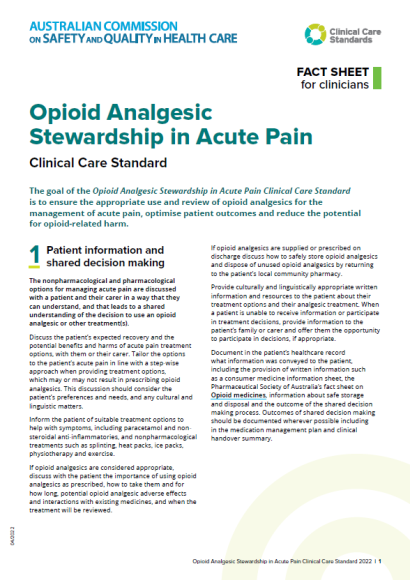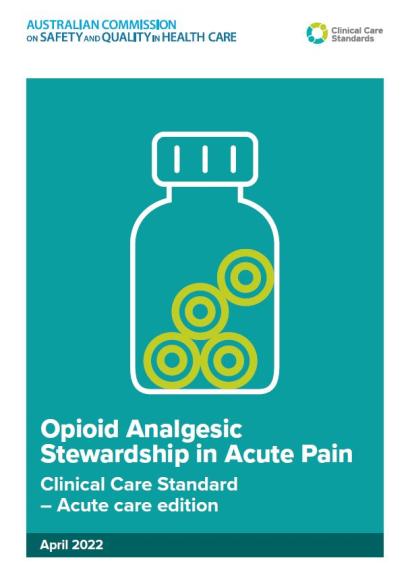Information for clinicians - Opioid Analgesic Stewardship in Acute Pain Clinical Care Standard
Guidance for clinicians on the nine quality statements from the Opioid Analgesic Stewardship in Acute Pain Clinical Care Standard, as well as helpful resources.
What do clinicians need to know?
Hospital emergency departments and surgical services are common sources of opioid analgesic prescribing for acute pain, and are key risk areas for initiation of ongoing use.
In the early postoperative period, each refill and week of opioid analgesic prescription is associated with a large increase in opioid misuse among opioid-naive patients. The number of days in the first opioid analgesic prescription is more strongly related to misuse than the dosage.
Opioid analgesics are effective for managing acute pain, but as high-risk medicines they can cause unintended harm. Careful assessment and management are required to deliver the benefits of prescribing opioid analgesics while minimising the possibility of harms, including respiratory depression, misuse, dependence and overdose.
The Opioid Analgesic Stewardship in Acute Pain Clinical Care Standard includes the nine quality statements listed below.
Quality Statements
Resources for clinicians
-
2022Fact sheet or brochure
This fact sheet lists the quality statements for clinicians included in the Opioid Analgesic Stewardship in Acute Pain Clinical Care Standard.
-
2022Guide, user guide or guidelines
This complete version of the Opioid Analgesic Stewardship in Acute Pain Clinical Care Standard describes what each quality statement means for patients and their families, clinicians, and health service organisations, and provides indicators for local monitoring. It includes information about using clinical care standards, and the background and evidence sources for this standard.
NPS MedicineWise resources
The following items are available to download from NPS MedicineWise.


